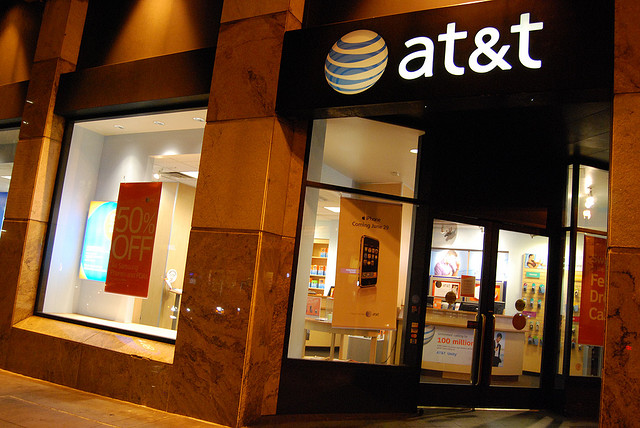In my last post I promised to consider how online news organizations can produce expensive content like reporting from Iraq.
Sites wanting to produce high-quality, expensive content face a chicken-and-egg problem. If you have a large audience, you can spread the costs of producing high-quality content over a larger base of readers. And if you have have a lot of high-quality content, that content will draw large numbers of readers. But if you have neither a large readership nor a lot of high-quality content, how do you get there?
The answer, of course, is that you bootstrap the process with cheap, sensationalistic content. You serve up smut, inane lists, and unpaid punditry. This kind of content is extremely cheap to produce and it draws a lot of readers.
But precisely because these kinds of content are so cheap, they attract a lot of competition and don’t stay profitable for very long. And so to keep growing, the largest and most successful sites move “up market” by hiring actual reporters who can produce original, non-sensationalistic content—the kind of content that smaller competitors can’t easily duplicate. The largest sites are in the best position to do this because they can spread the fixed costs of having a salaried reporters over a larger number of ad impressions.
This process shouldn’t surprise us, because it perfectly fits Clay Christensen’s model of disruptive innovation. Consider this example from the steel industry, drawn from the Christensen paper I wrote about last month:
Minimills first became technologically viable in the mid-1960s. The quality of the steel that minimills initially produced was poor because they melted scrap of uncertain and varying chemistry in their furnaces. The only market that would buy what the minimills made was the concrete reinforcing bar, or rebar, market because the specifications for rebar are loose. Once rebar is buried in cement, you can’t verify whether the steel has met the specifications. Rebar was therefore an ideal market for low-quality steel.
As the minimills attacked the rebar market, the integrated mills were actually happy to be rid of that business. Their gross profit margins on rebar often hovered near 7 percent…
All was well in this relationship until 1979, when the minimills finally succeeded in driving the last integrated mill out of the rebar market. Historical pricing statistics show that the price of rebar then collapsed by 20 percent. Why? A low-cost strategy only works when there are high-cost competitors in your market. After the last integrated mill had fled up-market and the low-cost minimill was only pitted against other low-cost minimills in a commodity market, competition quickly drove prices down to the point that none of them could make money.
The minimills soon looked up-market, and what they saw spelled relief. If they could just figure out how to make bigger and better steel—shapes such as angle iron, rails, and rods—they could roll tons of money again because the margins there were 12 percent. As the minimills extended their ability and attacked that tier of the market, the integrated mills were again relieved to be rid of that business because it just didn’t make sense to defend a 12-percent-margin business when the alternative was to invest to gain share in structural beams, where margins were 18 percent…
Peace characterized the industry until 1984 when the minimills finally succeeded in driving the last integrated mill out of the bar, rod, and rail market, which caused the minimills to reap the same reward for their victory: With low-cost minimill pitted against low-cost minimill, prices collapsed by 20 percent.
The minimills had to move up-market again.
The story ends with the minimills driving most of the integrated steel mills into bankruptcy.
Of course news isn’t steel. But I think this analogy helps us understand the extremely long chart that accompanies Nate Silver’s post about the NYT paywall. It shows which news outlets are most often credited with breaking news stories. The top 50 slots are dominated by traditional news organizations. Online-only websites are much further down the list, and they produce a trivial fraction of the overall reportage. But the distribution of topics among those sites is interesting. Most of them fall into a handful of categories: tech and gadgets, celebrity gossip, and politics. The web increasingly dominates these categories of news.
The disruptive technology of the web is busy devouring the rebar market of the news business. The most successful sites are getting tired of the thin margins at the lowest rungs of the latter and have started looking upward. The New York Times alone generated $387.3 million in digital revenue last year. That might not seem like a lot of money to the grey lady, but it looks like a huge jackpot to a still-small company like the Huffington Post. They—and dozens of their competitors—are working hard to find ways to take a piece of that pie.
Now obviously this isn’t an explanation of how web-based sites will produce high-end reporting. I’ve suggested a few possible strategies in previous posts, but I think focusing too much on the specifics will miss the broader trend. Without the technological and cultural baggage of a print past, web-only publications inherently have lower overhead. And the smaller average size of web-based publications means that the rate of experimentation is much higher. It’s only a matter of time before somebody figures out how to apply the low-costs tools of the web to high-value reporting. And the nimble, collaborative nature of the web means that successful models will be copied rapidly.
People look at today’s Huffington Post and conclude that the web can only do cheap, sensationalistic content. But in 1980, people looked at the minimills (and the microcomputer) and dismissed them as curiosities that could only serve the lowest rungs of their respective markets. But that was a misunderstanding of the economics of disruptive technologies. They always start at the low end of the market, but they rarely stay there.











